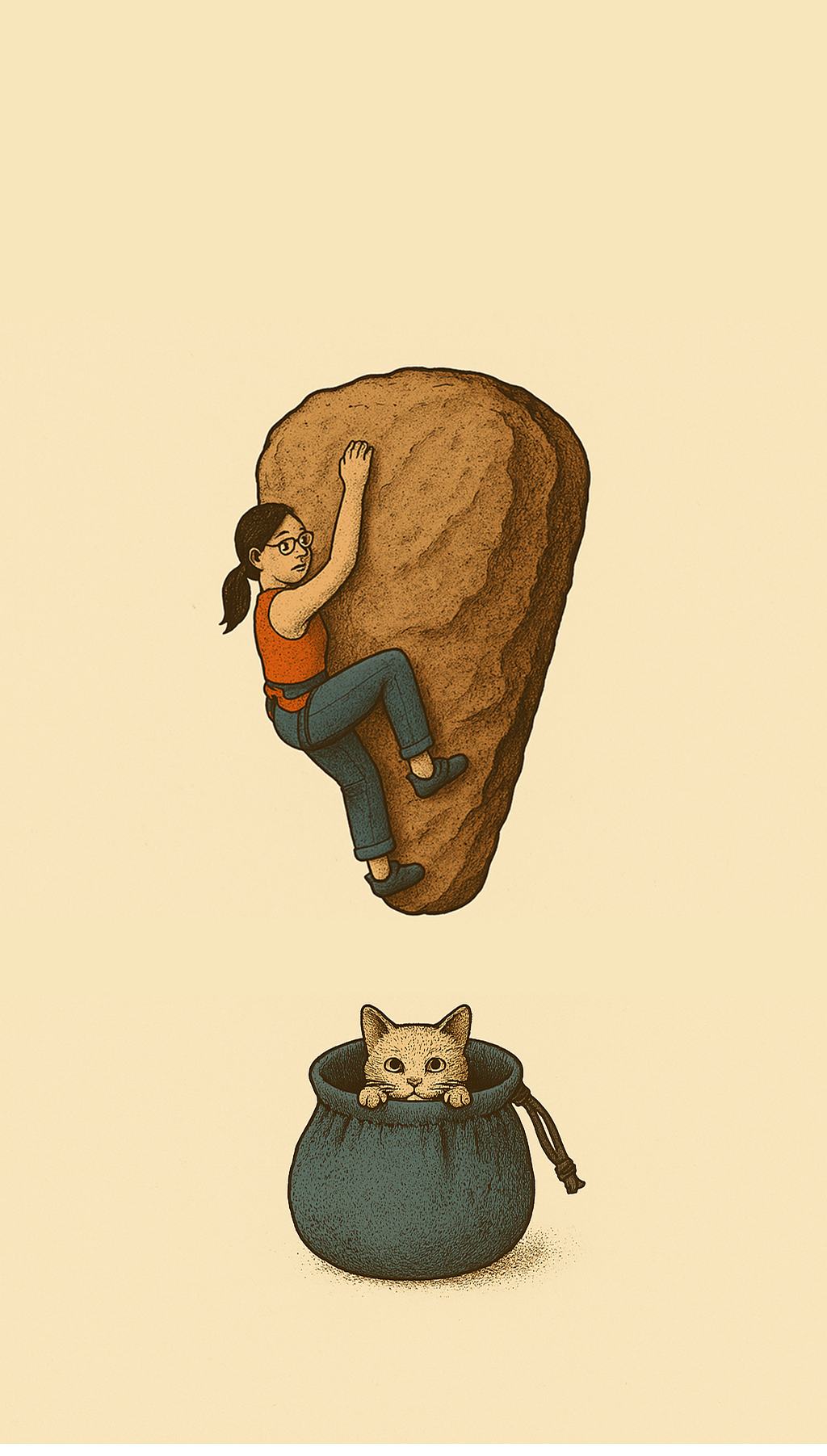Step, Slide, Send: Turning Stairs into a Climbing Lesson
Teaching the feet to lead by force of habit.
Purpose:
Train the principle: Feet act, hands react.
On the wall, your feet drive upward movement while your hands stabilize and adjust. This coordination is essential for conserving energy, avoiding over-gripping, and flowing through sequences.
Setup:
Find a staircase with railings you can touch lightly.
Ideally, the railing is smooth and offers minimal friction—this helps train your sensitivity and control.
Instructions:
Start at the bottom of the stairs.
Lightly rest both hands on the railing on either side. Stand tall, relaxed, but engaged.Step Up with the Left Foot.
As your left foot presses down and your body rises, let your left hand naturally slide up the railing. Focus on minimal effort in the hand—just enough to maintain light contact.Pause and Feel.
Notice: Your foot drives the lift, your hand responds and stabilizes.Step Up with the Right Foot.
As your right foot presses and your body rises, let your right hand slide up. Again: foot acts, hand reacts.Repeat Step by Step.
Move in a slow, controlled rhythm. Prioritize awareness over speed.
Key Focus:
Keep hand contact light, not weight-bearing.
Use the foot to initiate each move.
Let the hand follow naturally as a reaction.
Sense the wave of movement traveling from foot to hand.
Why This Matters:
On the wall, many climbers default to pulling with the arms before establishing the feet. This wastes energy and reduces control.
By drilling the act–react relationship in everyday settings—like stairs—you train your nervous system to:
Prioritize footwork.
Trust legs to drive movement.
Use hands as sensitive stabilizers.
Extra Reflection:
This practice can also shift your mindset:
Instead of “pulling yourself up,” think “pushing yourself up.”
Takeaway:
Your body learns best through repetition in context.
By turning something as mundane as climbing stairs into deliberate climbing practice, you’re embedding efficient movement patterns that will show up when it counts—on the wall.
